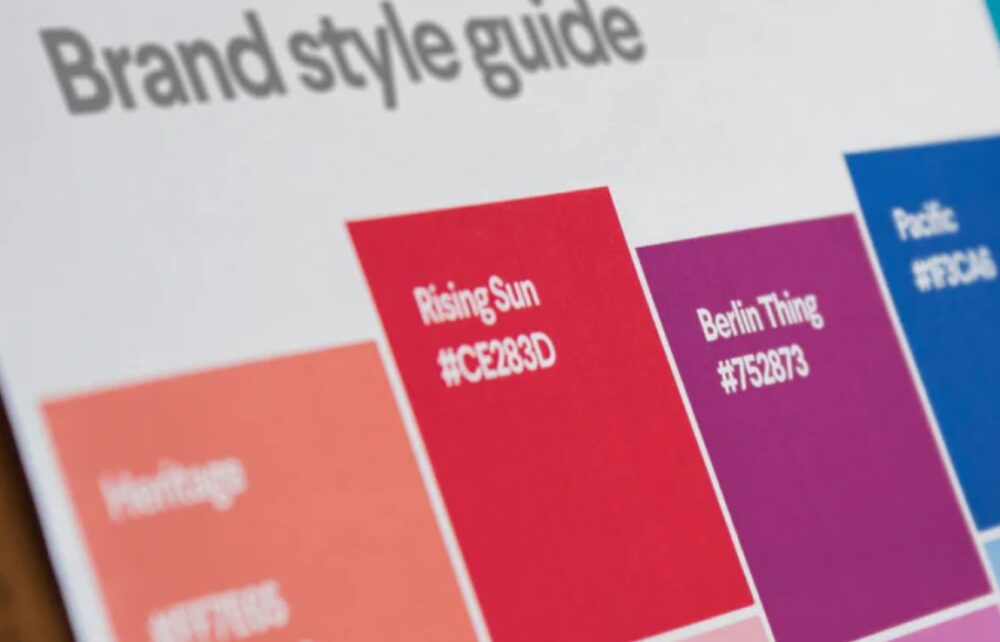Distinctive and memorable brand identity takes time to build. It takes more than just choosing colours, phrases, and fonts to create a logo. Your design should be well-thought-out and in line with the objective of your business.
A solid understanding of your target audience is required in addition to excellent communication and creative design skills. At its most basic level, brand identity is a method of telling your story to the world, differentiating your firm from the competitors, and creating brand experiences that persuade people to do business with you.
This article will assist you in how to develop a meaningful brand identity. You’ll learn practical advice, simple methods to get started, and how to connect with your target market in a productive and profitable way if you’re just starting a business or thinking about retooling your brand.

1. Define your vision for your brand
You must sit down, take time and write your brand’s ideals down on paper, regardless of whether you call it value proposition, brand vision, mission statement, or just brand perception. In due course, you will learn that pen and paper are essential instruments for this process and for other similar jobs in the future.
Some of you might still doubt the vision of the brand. However, here is a quick definition that will help you organize your ideas more effectively:
A brand vision shows the ideals that influence the present and future of a firm. In other words, the vision of the brand is a short and straightforward statement declaring the goal of the organization.
For all your branding needs and questions, visit endlessbranding.com

2. Research your audience and their views about you
One thing to consider when creating a brand identity is what others say about you (or how they perceive you), rather than what you think about your brand.
This is why, before you sit in all those constant brainstorming meetings, you must first go out and ask people how they perceive you. Getting out, on the other hand, does not imply taking to the streets.
You may readily use social media channels for research in this day and age when everything has a digital presence. Simply Google your company or product to see what people are saying about it on social media and other trending platforms.
Conduct research and then analyze it to ensure that you have all your facts straight and that whatever you’re trying to produce includes people’s input.

3. Consistency is the key
If you only end up remembering one thing from this article, it should be how important consistency is when it comes to executing your brand identity. Being recognizable is one of the key reasons for having a brand identity in the first place. Furthermore, consistency instills trust in the customers you’re attempting to target.
Customers will have a more challenging time identifying with your brand, trusting you, and eventually buying from you if you don’t maintain consistency throughout all aspects of your brand identity. Consistency, thankfully, isn’t challenging to achieve.
It might be as simple as deciding on the exact aspects you’ll employ in every part of your brand and sticking to them. Then you must decide how you will position your brand pieces.

4. Make a list of the demographic you want to reach out to
Defining your target personas is an important part of developing a compelling brand identity. Who are the customers you’re aiming to attract with your brand identity?
What are the colors that they are most attracted to? What kinds of logos do they like? What type of messaging and typefaces do they want?
Because you know exactly who you’re attempting to reach, accurately identifying your target audience makes the brand identity process considerably more potent. And, thanks to the identification you build, you’ll have a better understanding of how to contact them.

5. Establish a Style Guide
Creating a style guide is one of the most beneficial things you can do for your brand identity. Style guide is more than simply putting all your brand identification elements in one location.
A style guide organizes your materials and specifies when and how they can be utilized. It guarantees that all your brand identity assets are used appropriately by everyone who needs to utilize them. As a result, you’ll be able to maintain your brand consistently, with fewer persisting problems.
A style guide, for example, is a valuable asset if you have a team working on your next set of sponsored ads. The style guide can be used by designers and social media managers to ensure that they are using the correct brand colors, font, logo usage, and messaging.
Once you’ve settled on your brand assets, creating a style guide is simple. It might be as simple as creating a brand logo that is up for public consumption. You can also manage your style guide with software that is specifically developed with features to help you manage your brand identity.

6. Packaging that reflects your brand identity
Paying attention to the finer points of your brand might help it to stand out. Using branded packaging can be a lovely touch that the end-user would appreciate if done right. Having your logo, brand symbol, or even utilizing your own distinctive brand font for any lettering on the packaging may make a huge difference in establishing a good first impression on anyone receiving one of your items in a well-branded package.
The Final Word
If you’re starting a new company or want to rebrand it from the ground up, you’ll need to figure out how to create a brand identity that is unique. These few basic recommendations will help you through this procedure, which is why they are helpful in every situation, regardless of your business. Every branding concept and strategy begins with a visual brand identity for a company.





